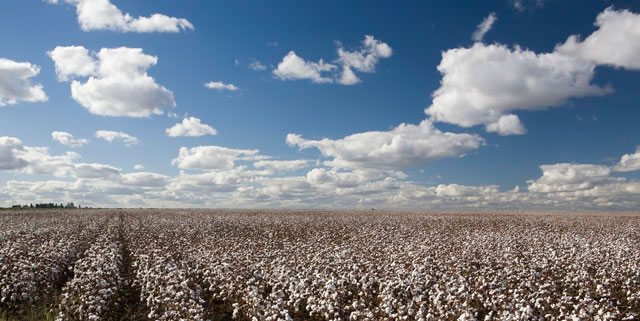Macroeconomic Overview: September marked the fifth anniversary of the collapse of the onset of the financial crisis. In the time since, the economy could be characterized as having experienced slow growth. It took three and a half years for the level of GDP to recover to pre-recession levels (recession officially began before the financial collapse, in December 2007). The recovery in per capita terms, which accommodates for population growth and can be considered as a representation of economic opportunity at the individual level, did not occur until the most recent revisions to GDP data, which lifted preliminary figures for growth in the second quarter of 2013 from 1.7% to 2.5%.
Economic data continue to suggest moderate future growth. The housing sector, which has been seen as a primary cause of the recession and financial collapse, has been improving. The latest housing price data (Case-Shiller Index) indicate the housing prices have increased 15.7% relative to the low point posted in January 2012. However, even with the improvement, average home prices remain 14.4% below their pre-recession level and 23.3% below the peak posted in April 2006. Further recovery in home prices would boost consumer wealth and could motivate additional spending.
Lower interest rates, stemming from unprecedented actions by the Federal Reserve in the wake of the financial crisis, likely contributed the recovery in the housing market. Another sector benefiting from lower interest rates is the auto industry. In August, the annual rate of car sales in surpassed pre-recession levels and was 17% higher year-over-year. The fact that consumers are demonstrating a willingness to commit to major purchases, such as cars, can be interpreted as a signal of their confidence in future economic growth.
Both the decline and recovery in apparel spending were relatively mild in comparison to auto sales. In inflation-adjusted dollar terms, the low point in consumer apparel spending occurred in March 2009, when it dropped to a level 7.0% below those prior to the recession. In the latest available data for July, spending on clothing was 6.6% higher than it was in December 2007. However, the recovery in apparel spending was coincident with the only meaningful increase in retail apparel prices in nearly 15 years. The increase in apparel prices during this time period (+6.8%) was nearly equal to the increase in consumer apparel spending, implying that clothing sales growth in unit terms has been nearly flat. Prices at every other stage of the apparel supply chain, ranging from fiber to imports, declined as cotton prices returned to levels near their historic averages. If retail prices eventually decrease, sales could be expected to increase in unit volume terms.
Employment: The U.S. economy is estimated to have added 169,000 jobs in August, slightly lower than the average increase of 184,000 over the last twelve months. Figures for June (-16,000, from +188,000 to +172,000) and July (-58,000, from +162,000 to +104,000) were both revised lower, indicating that 74,000 fewer jobs were created in the last two months than previously estimated. Some of the strongest job growth in recent months has been in the retail sector. Over the past twelve months, 393,000 positions were added in retail stores. In August, the strongest segment of job growth was for clothing stores (+14,000). The expansion in retail employment could be an indicator of expectations for increased consumer spending in coming months.
The unemployment rate declined from 7.4% to 7.3% in August, dropping to its lowest level since December 2008. This month’s decline was a result of increased employment, fewer layoffs, and a decrease in the labor force participation rate.
Consumer Confidence and Spending: The Conference Board’s Index of Consumer Confidence increased marginally in August, rising from 81.0 to 81.5. With the improvement marked over the past three months, consumer attitudes have climbed to their highest levels since the onset of the financial crisis. Both overall consumer spending and spending on apparel were flat when comparing results from July to June. Year-over-year, overall spending was up 1.7% in July; spending on apparel was up 1.2%.
Consumer Prices & Import Data: In the latest available data for July, the CPI for apparel increased for the third consecutive month, climbing to its highest value since the 2010/11 spike in fiber prices. Average import prices for cotton-dominant apparel continue to be stable in July, remaining near the same general level they have held since the spring of 2012 – about 10% lower than the September 2011 peak and about 13% higher than their pre-fiber-spike level. Following a decline in June, overall apparel import volumes (all fibers) rebounded in July back to levels nearly even to the average over the past three years. Imports between August and October tend to be the highest of the year, and can be considered to describe the volume of items brought into the country for the holiday sales period. Imports through July have been flat relative to data from recent years. Releases in the next few months should provide more insight into retailer expectations regarding the volume unit sales during the 2013 holiday.
[pdfcharts]
[pdf pdflink=”/wp-content/uploads/2013/09/2013-09-Executive-Cotton-Update-2.pdf”]U.S. Macroeconomic Indicators & Cotton Prices[/pdf]
[pdf pdflink=”/wp-content/uploads/2013/09/2013-09-Executive-Cotton-Update-3.pdf”]Daily Cotton Price & Currency Data [/pdf]
[pdf pdflink=”/wp-content/uploads/2013/09/2013-09-Executive-Cotton-Update-4.pdf”]GPD Growth & U.S. Interest Rates [/pdf]
[pdf pdflink=”/wp-content/uploads/2013/09/2013-09-Executive-Cotton-Update-5.pdf”]ISM Indices [/pdf]
[pdf pdflink=”/wp-content/uploads/2013/09/2013-09-Executive-Cotton-Update-6.pdf”]Leading Indicators & Consumer Confidence [/pdf]
[pdf pdflink=”/wp-content/uploads/2013/09/2013-09-Executive-Cotton-Update-7.pdf”]Employment [/pdf]
[pdf pdflink=”/wp-content/uploads/2013/09/2013-09-Executive-Cotton-Update-8.pdf”]Housing [/pdf]
[pdf pdflink=”/wp-content/uploads/2013/09/2013-09-Executive-Cotton-Update-9.pdf”]Industrial Production Inventory/Shipments [/pdf]
[pdf pdflink=”/wp-content/uploads/2013/09/2013-09-Executive-Cotton-Update-10.pdf”]U.S. Yarn Exports [/pdf]
[pdf pdflink=”/wp-content/uploads/2013/09/2013-09-Executive-Cotton-Update-11.pdf”]Consumer Spending[/pdf]
[pdf pdflink=”/wp-content/uploads/2013/09/2013-09-Executive-Cotton-Update-12.pdf”]Industrial Production & Inventory/Shipments [/pdf]
[pdf pdflink=”/wp-content/uploads/2013/09/2013-09-Executive-Cotton-Update-13.pdf”]Trade Weighted Index & Asian Currencies[/pdf]
[pdf pdflink=”/wp-content/uploads/2013/09/2013-09-Executive-Cotton-Update-14.pdf”] Currencies vs. U.S. Dollar [/pdf]
[pdf pdflink=”/wp-content/uploads/2013/09/2013-09-Executive-Cotton-Update-15.pdf”]U.S. Balance Sheet & Fiber Prices [/pdf][/pdfcharts]
